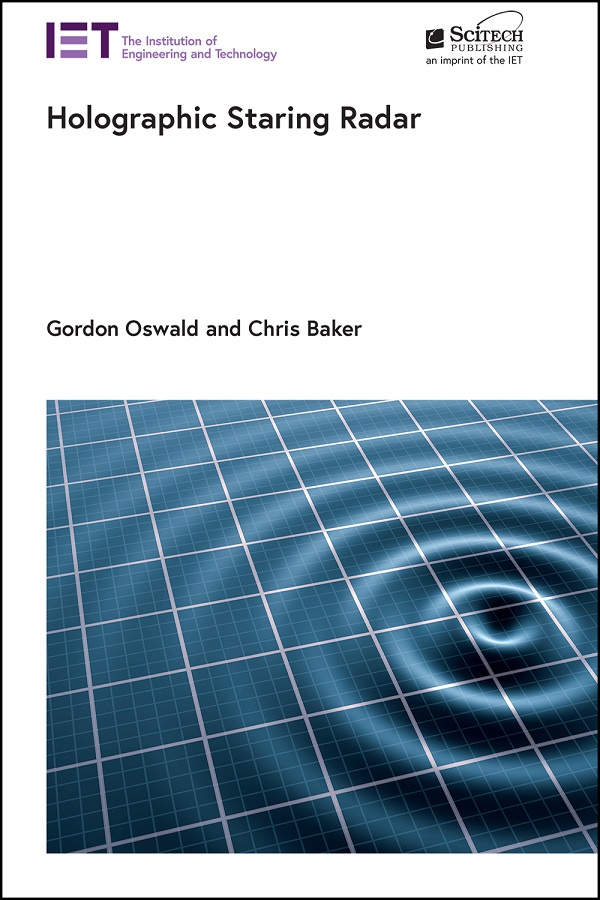- Agricultural Engineering and Technology
- Applied Physics
- Built Environment
- Computing and Networks
- Control, Robotics and Sensors
- Electrical Regulations
- Electromagnetics and Radar
- Energy Engineering
- Healthcare Technologies
- History and Management of Technology
- IET Codes and Guidance
- Manufacturing
- Materials, Circuits and Devices
- Model Forms
- Security
- Telecommunications
- Transportation

Holographic Staring Radar
by Gordon Oswald, Chris Baker
The development of radar has been one of the most successful direct applications of physics ever attempted, and then implemented and applied at large scale. Certain watchwords of radar engineering have underpinned many of the developments of the past 80 years and remain potential avenues for improvement. For example, 'Narrow beams are good', 'Fast detection is good', 'Agility is good', and 'Clutter is bad'. All these statements of merit are true. The underlying principles for all these statements are the laws of physics, and they provide support for current radar designs. However, each of these statements is really a design choice, rather than their necessary consequence.
This book shows that under the physical laws and with modern data processing, staring radar offers a new direction of travel. The process of detection and tracking can be updated through persistent signal discovery and target analysis, without losses in sensitivity, and while delivering detailed information on target dynamics and classification.
The first part of the book introduces various forms of staring radar, which include the earliest and simplest forms of electromagnetic surveillance and its users. The next step is to summarise the physical laws under which all radar operates, and the requirements that these systems need or will need to meet to fulfil a range of applications. We are then able to be specific about the technology needed to implement staring radar.
About the Author
Gordon Oswald was the chief science officer of Aveillant Ltd, UK. He studied physics at Oxford, then radioglaciology at Cambridge, applying radar in Arctic and Antarctic geophysics. He joined Cambridge Consultants (Arctic remote sensing; European and US anti-air weapons evaluation; automotive collision avoidance); founded Aveillant (aviation and wind turbine reconciliation; UAV threat classification). He has served as a research professor at the University of Maine, chairman of the British Association of Remote Sensing Companies, and organising secretary of the Cambridge Society for the Application of Research.
Chris Baker holds the chair in Intelligent sensors systems at the University of Birmingham and prior to this was the chief technology officer of Aveillant Ltd., UK. He has also held positions at The Ohio State University, Australian National University (ANU), University College London and UK government research laboratories. He is the author of over three hundred publications, including Stimson's Introduction to Airborne Radar. He is a fellow of the IET and the IEEE and holds a number of visiting positions at leading universities.
Publication Year: 2021
Pages: 351
ISBN-13: 978-1-78561-389-0
Format: HBK
